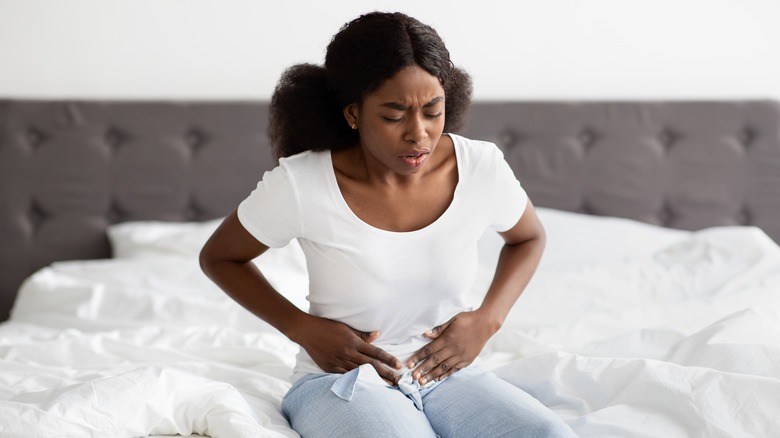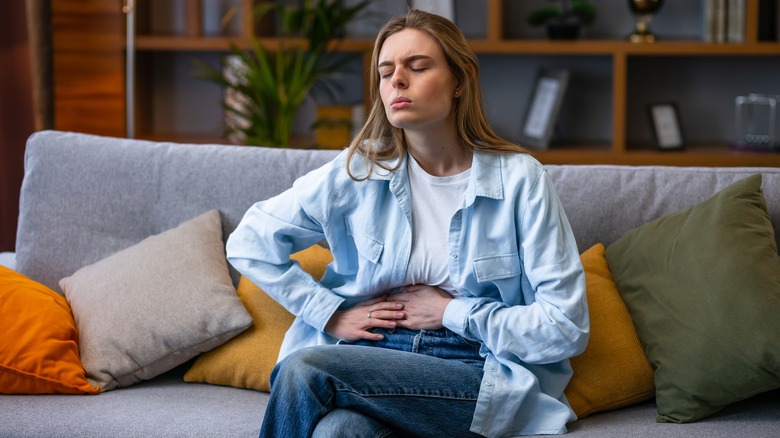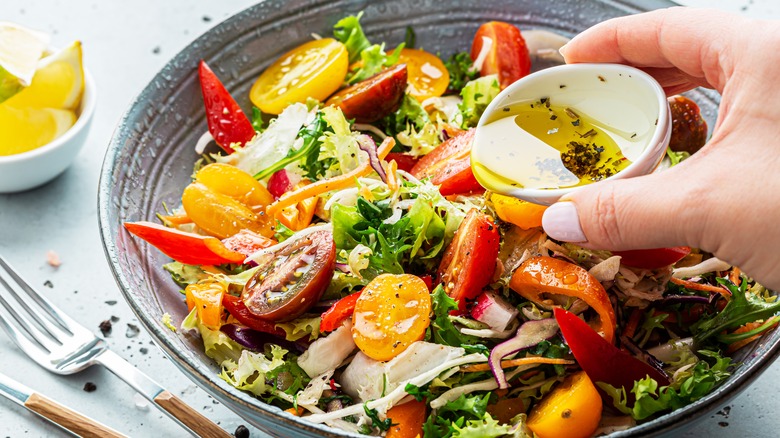Period Cramps Are An Unfortunate Fact Of Life, But What Really Causes Them?
We've all been there: Your day's going perfectly fine — that is, until your cycle arrives, bringing aches and aggravation. Medical professionals refer to monthly pain as dysmenorrhea, meaning painful menstruation, but many of us simply call them period cramps. Cramps can range from mildly irritating to downright debilitating, and there's nothing worse than having your plans interrupted by their sudden arrival. According to a 2012 study published in the Journal of Pain Research, 84.1% of young women reported experiencing menstrual pain at some point in their lives, with 43.1% saying they had pain during every period.
Thanks to apps and smart health devices, we can track our periods more accurately than ever. Still, it can be hard to figure out why some of us contend with more painful periods than others each month. With nearly half of all women reporting monthly aches and pains, it's important to understand why cramps happen and, more importantly, how to treat them. So what really causes period cramps, and can you get rid of them?
The reason why we get monthly period pains
It's no secret that hormones influence your periods, but did you know that they're also behind some of your monthly pain? "As a period begins, cells that line the uterus called endometrial cells break down and let out hormones known as prostaglandins. Prostaglandins can cause inflammation and contraction," Dr. Jennifer Wider tells Health. Everyone's cycle is different, and most of us have a good idea of what is and isn't normal during our monthly bleed. Still, although some degree of tenderness is to be expected, experts say that experiencing significant pain during your period isn't something you should ignore. "... we're led to believe pain, discomfort, and unpleasant symptoms are totally normal. Unfortunately, this way of thinking means that so many women just grit their teeth through their periods, but it just shouldn't be this way," nutritional therapist and female health expert Jodie Brandman told Forbes.
Doctors classify period pains into two categories: primary dysmenorrhea and secondary dysmenorrhea (via Johns Hopkins Medicine). While primary dysmenorrhea is associated with mild aches and uterine contractions one notices at the very start of their period, secondary dysmenorrhea refers to more severe and prolonged pain that comes about as a result of another medical issue. Secondary dysmenorrhea is often linked to conditions like endometriosis, pelvic inflammatory disease, and cysts or fibroids.
How to alleviate painful period cramps
Searching for ways to get rid of period cramps? If you're dealing with severe pain — the kind that makes you cancel plans or stay in bed for hours — it's important to rule out the possibility of underlying conditions first. Reproductive illnesses that cause ongoing pain, or secondary dysmenorrhea, can be evaluated and treated with the help of a doctor or gynecologist. But if your period pains are relatively mild, or you're already under a doctor's care, there are some lifestyle changes you can make that may mitigate monthly cramps. A 2020 study published in the health journal Nutrients suggests that some dietary habits, like regular olive oil consumption, were associated with lighter, less painful periods.
"If you go on an anti-inflammatory diet — fruit, vegetables, olive oil, like the Mediterranean diet — you'll get less cramping," Dr. Monica Christmas told CNN. In addition to modifying your diet, experts advise that you stay hydrated and partake in gentle exercise, like yoga, to feel your best each month. However, if you implement healthier habits and still see no changes to your level of pain, speak with a healthcare professional for more guidance. Your periods can change throughout your life — so if you have any concerns, it's vital to discuss them with your doctor.


